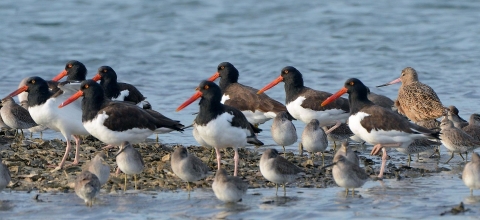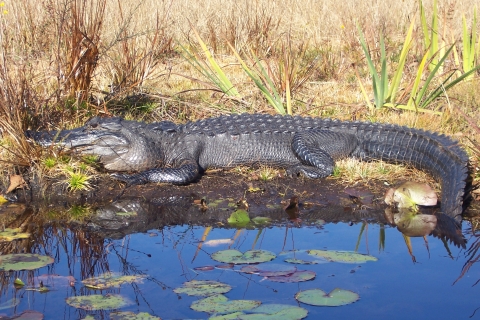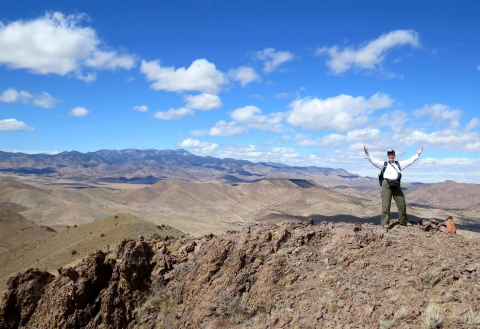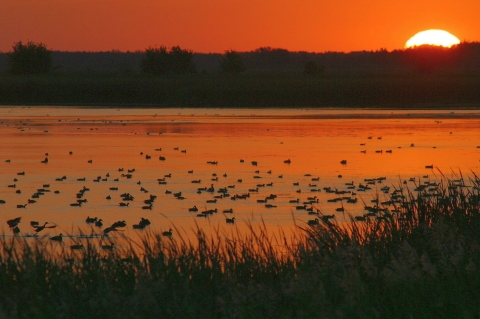Management and Conservation
Wilderness areas are places untamed by humans. The Wilderness Act of 1964 allows Congress to designate wilderness areas for protection to ensure that America's pristine wild lands will not disappear. Wilderness areas can be part of national wildlife refuges, national parks, national forests or public lands managed by the Bureau of Land Management.
Learn more about wilderness area at Cape Romain National Wildlife Refuge in South Carolina.
On September 3, 1964, President Johnson signed the Wilderness Act into law, protecting 9.1 million acres of the country’s wildest places for generations to come. The landmark conservation law now protects more than 111 million acres of U.S. wilderness.
The Wilderness Act includes this definition: “A wilderness, in contrast with those areas where man and his own works dominate the landscape, is hereby recognized as an area where the earth and its community of life are untrammeled by man, where man himself is a visitor who does not remain. An area of wilderness is further defined to mean in this Act an area of undeveloped Federal land retaining its primeval character and influence, without permanent improvements or human habitation, which is protected and managed so as to preserve its natural conditions...”
Under the National Wilderness Preservation System, established by the Wilderness Act of 1964, only Congress can designate wilderness. A Congressional wilderness designation provides greater legal protection than an administrative designation.
The National Wilderness Preservation System today includes 803 congressionally designated wilderness areas comprising more than 111 million acres in 44 states and Puerto Rico. The U.S. Fish and Wildlife Service is one of four federal agencies with stewardship of designated wilderness. The others are the Bureau of Land Management, the U.S. Forest Service, and the National Park Service.
In addition to the wilderness it administers on 63 national wildlife refuges, the U.S. Fish and Wildlife Service also manages a wilderness area at Leadville National Fish Hatchery in Colorado.
Wilderness Stewardship
Managing wilderness requires a light hand. Wilderness stewards in the U.S. Fish and Wildlife Service leave the forces of nature unrestrained to the extent possible.
To preserve wilderness character, refuge managers must show that any actions taken are “the minimum require[d] for administering the area as wilderness and necessary to accomplish the purposes of the refuge, including Wilderness Act purposes.” What that means, in most cases: no motorized equipment; no cars, trucks or landing aircraft; no permanent roads or structures.
When the manager of Fort Niobrara National Wildlife Refuge in Nebraska moves hundreds of bison from winter to spring pastures, he generally uses herders on horseback instead of ATVs, despite the greater labor involved. That’s because the refuge includes 4,600 acres of wilderness. When shrubs clog popular canoe trails at Okefenokee National Wildlife Refuge in Georgia, managers often dispatch crews with hand clippers, although chainsaws chew up swamp growth faster. That’s because the law restricts the use of heavy machinery on the refuge’s 354,000 acres of wilderness.
But even federally protected wilderness is vulnerable to threats such as habitat loss and fragmentation from nearby development, the invasion of non-native plant and animal species, and climate change climate change
Climate change includes both global warming driven by human-induced emissions of greenhouse gases and the resulting large-scale shifts in weather patterns. Though there have been previous periods of climatic change, since the mid-20th century humans have had an unprecedented impact on Earth's climate system and caused change on a global scale.
Learn more about climate change . Refuge System experts monitor wilderness areas for threats to their character.
Help Safeguard Wilderness
Follow these steps as you enjoy wilderness areas.
- Practice “Leave No Trace”
- Plan ahead and prepare
- Travel and camp on durable surfaces
- Dispose of waste properly
- Leave what you find
- Minimize campfire impacts
- Respect wildlife
- Be considerate of other visitors
“If you know wilderness in the way that you know love, you would be unwilling to let it go. ... This is the story of our past and it will be the story of our future.”
— Terry Tempest Williams, author and conservationist
Wilderness Resources
Arthur Carhart National Wilderness Training Center
Wilderness Connect (history, maps and other information)
Aldo Leopold Wilderness Research Institute
Animated video: "The Wilderness Act" (9 minutes)
Story: Wilderness! There's Nothing Like It
Coloring book: Into the Wilderness on National Wildlife Refuges Coloring Book







